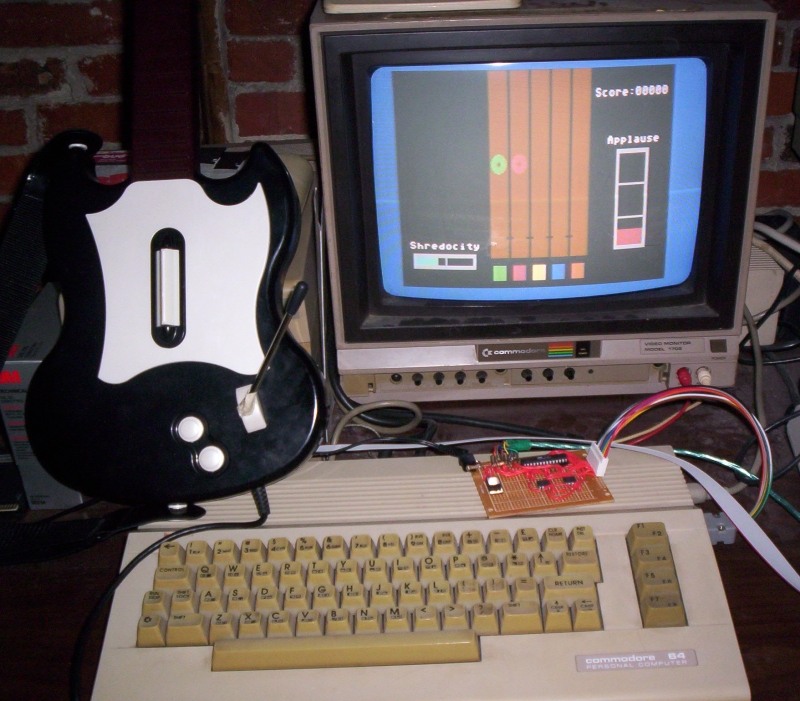Let me first say that if you ever get the idea to drive an hour both ways in a major snow storm, quickly forget that idea. Trust me.
Apart from my 2 hour turned 6 disaster, some good additions tonight. After banging my head against the wall the last few nights with getting raster interrupts working with my code and the way the compiler writes the executable, I finally got it working tonight. The speed of the program is just sick now, I think I’ll be able to add some better graphics into the program while still maintaining necessary speed for SID processing and reading the guitar. Which is good, because it will look better, and a few people have written in with some nice examples of how it could look. And since I am definitely not an artist I’ll be writing you guys back. 🙂
The program has come a long way since I posted that video a few days ago (I’m almost tempted to take it down since it goes so much faster now, but I’ll keep it up until I get a new video online). Checklist of things left to do:
1. Finish and debug button/scoring code that detects whether a correct button combination was pressed or not.
2. Implement an in-game editor that allows creating note-button data for any given song (pretty necessary for both now and end-user expansion)
3. Create intro screen, game menu, song selection, etc
4. Allow saving of score to disk
5. Add some nice backgrounds, better sprites and graphics if possible (most likely will be at this point)
Also, PSX64 related, after the game is completed I’m going to be getting some professionally made PCBs to sell if anyone is interested, more on that later though. Remember, the PSX64 can be used with any playstation controlled on any DB9 digital joystick system (C64, Amiga, Atari, SMS, etc)






